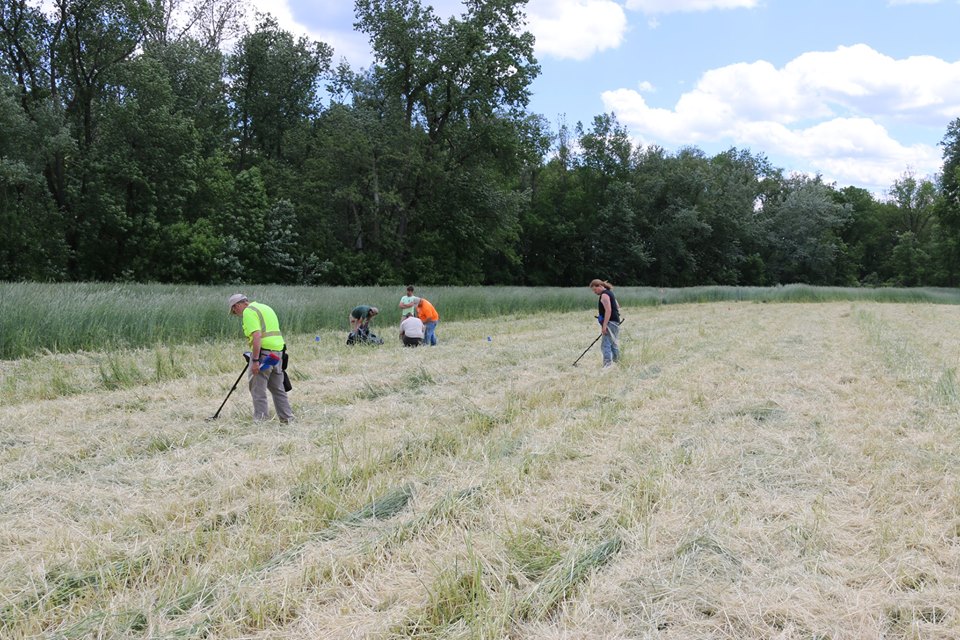The Queen Esther’s Town Preserve is located in Milan in northeast Pennsylvania. The site, which is more than 92 acres, sits along an expansive floodplain near the confluence of the Susquehanna and Chemung Rivers. After working for over a decade to acquire the property, the Conservancy finally signed an option to purchase the site, which has staggering research potential for future scholars.
Queen Esther is thought to have been of French and Native American ancestry. She married a Delaware Indian chief and had an influential position in the tribe. In the mid to late 1700s she was the leader of the eponymous Queen Esther’s Town, which consisted of about 70 houses. Her own dwelling was referred to in historical accounts as her “castle.” In addition to these structures, the community had a large herd of cattle that they grazed on Queen Esther’s Flats.
In 2017 Binghamton University held a field school at Queen Esther’s Town. Students investigated the 18th-century Native American village site in northern Pennsylvania. The site, which is more than 92 acres, sits along an expansive floodplain near the confluence of the Susquehanna and Chemung Rivers.
The locale was home to a community of Delaware Indians and led by Queen Esther, a prominent woman of French and Native descent, during the American Revolution. Historic records describe the village as having 70 houses and cattle grazing lands, all of which were destroyed in September 1778 as part of the American campaign against British-allied Native American villages. The area was surface collected by collectors and avocational archaeologists during the 20th century, but little is known about the village layout and individual structures. This was the first controlled subsurface investigation of the village site and was guided by the results of a geophysical survey. The project was led by Professor Siobhan Hart and Dr. Nina M. Versaggi of Binghamton University.
The five-week field school included intensive training in Northeastern Native American history, archaeological survey techniques and excavation, laboratory methods and artifact analysis, archaeological interpretation, and other kinds of evidence integral to interpretations of the past, such as geology, oral history, and written records. Many non-destructive research techniques were employed, and much of the site remains intact. Students started with metal-detecting surveys followed by test pit excavations during week 2 of the field school.
Queen Esther’s Town preserve was featured in American Archaeology, Spring 2015 | Vol. 19, No. 1
American Archaeology is available on Newsstands and at Bookstores, or become a member of the Archaeological Conservancy to subscribe.





